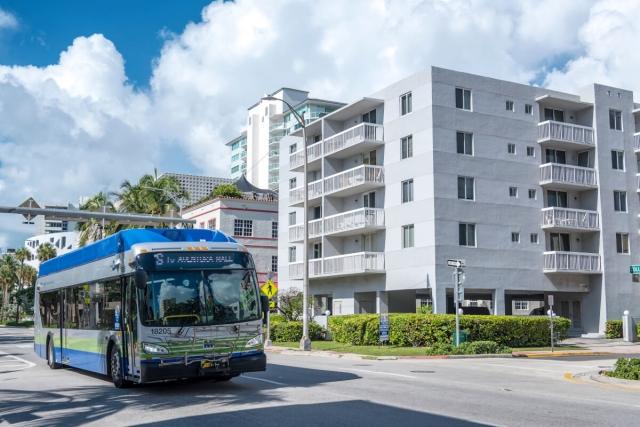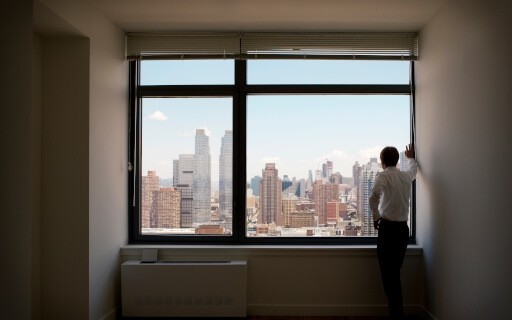
Renters have varying priorities when looking for a home. While some focus on amenities, others might prioritize square footage. However, for renters in dense metro areas, accessible public transit often tops their list of rental must-haves.
When buying a property, it’s easy to focus on the unit rather than its surroundings. However, if you really want to get the most out of your investment, it’s important to consider factors like public transit to ensure your rental appeals to the masses.
So, hop on board, buckle your seatbelt, and let’s dive right into how public transit affects your rental property value. In this article, we’ll explain why public transit access is important, where it matters most, and how to advertise it in your listing. Here’s a preview of what we’ll cover:
- Why public transit access matters when investing
- How public transit affects property value
- Best places to invest in real estate with public transit
- Ways to highlight public transit access in your online listing
Why Consider Transit Options When Purchasing an Investment Property
If there’s one common enemy among us, it’s traffic. It’s time-consuming, aggravating, and, frankly, too expensive. For these reasons and more, many renters are choosing public transit over driving. According to recent data from Apartments.com, 27% of renters consider public transportation access a non-negotiable in their rental search, while only 18% said the same for highway access.
If this shift to a car-free lifestyle persists, public transit will continue to top renters’ priority lists. As a landlord, it’s important to consider these changing needs and preferences, especially when making new investments.
How renters benefit from living near public transit
So, what exactly is causing this shift toward a car-free lifestyle? Well, along with avoiding traffic-induced headaches, here are some reasons why renters are gravitating toward homes near public transit:
Convenience
If you’ve ever circled a parking lot searching for an open space or sat in bumper-to-bumper traffic, you know just how inconvenient driving can be. By opting for public transit instead, what were once daily frustrations and road rage fuel become distant memories. With public transit, there’s no need to stress over parking or traffic jams. All you have to do is hop on and enjoy a worry-free ride to your destination.
Costs savings
Between gas prices, insurance costs, and recurring maintenance, owning a car can be pricey. For this reason, more and more people are going car-free, kissing these inhibiting costs goodbye along with the inconveniences mentioned above. Though public transit, too, costs money, the regular fare is often much more affordable than owning a vehicle. Plus, many cities offer discounted passes for frequent riders, making the cost of public transit even more budget-friendly.
Environmental impact
Another big pro of public transit is its environmental aid. According to the Kansas City Area Transportation Authority, public transportation is one of the most effective actions individuals can take to conserve energy. If a single rider switches from a 20-mile car commute to public transit, they can reduce their CO2 emissions by 20 pounds per day, or 48,000+ pounds per year. For eco-conscious renters, this statistic alone may be reason enough to go car-free and focus their search on rentals with easy access to public transit.
How Public Transit Affects Property Value
Living near public transit is a win-win for both renters and landlords. Renters enjoy the convenience and accessibility, while landlords benefit from higher property values and stronger rental income.
But why can properties near public transit command higher rent? The answer lies in renter demand. According to data from Apartments.com, three in 10 people prioritize public transit access when searching for a home. As public transit and walkability take more and more priority, rental properties that meet these criteria can justify higher prices.
According to data from the American Public Transportation Association and the National Association of Realtors, properties close to public transit can more easily retain their value. This was discovered in a study on changing property values over a five-year recession period. Researchers found that though average residential sale prices declined during this time, the decline was substantially lower in areas with strong public transit access. This data highlights a strong correlation between market value and transit access, making it a key factor to consider when buying a rental property.
Where Public Transit Matters Most
So, where does public transit matter most for property investments? Well, though it comes as no shock, you’ll find more car-fee renters in dense, urban areas than in remote towns. These areas, often considered the best places to invest in real estate, have inherently well-connected transportation networks, making it easier for renters to forgo personal vehicles and rely on walking or public transit.
While you can probably guess some of the top markets for public transit, here’s a list from the U.S. News & World Report detailing which cities have the strongest public transit systems:
- New York, NY
- San Francisco, CA
- Boston, MA
- Jersey City, NJ
- Washington, D.C.
- Philadelphia, PA
- Newark, NJ
- Chicago, IL
- Seattle, Washington
- Arlington, VA
Now, why is it that dense metros, like those listed above, prioritize public transit? The answer largely lies in the cost of living. Because the cost of living is already so high in these areas (we’re talking 152% higher than the national average for New Yorkers), the added convenience of public transportation makes a big difference for residents. It’s also important to note that these dense areas have little space for parking, making public transit necessary for getting around.
So, if you’re renting out a property in Chicago, Philadelphia, or any of the abovementioned metros, consider how public transit access could affect your rental’s appeal. Properties near subway stations, bus stops, and other public transit access points will likely generate more demand. If your property isn’t close to one of these, try to highlight the area’s walkability instead. Any form of convenient transportation—whether by foot or transit—adds value for renters, especially if it eliminates the need for a car.
How to Highlight Transit Options in Your Property Listing
You don’t want to leave anything on the table when it comes to your property listing – including public transit access. If your rental is close to a bus stop, train station, airport, etc., make sure that renters know! Otherwise, your listing might not get the attention that it deserves.
To effectively highlight public transit access, make sure to give some specifics. How far exactly is the home from the nearest transit stop? What are the commute times to popular destinations like downtown or the nearest university? Is the area walkable? Including this information could increase the quantity and quality of applicants, as it can be a major selling point depending on the market.
Spotlight public transit on your Apartments.com listing
Want public transit options to be front and center? List your property on Apartments.com! Our listings include a prominent transportation section highlighting access to subways, commuter trains, and airports. And on top of that, you can also showcase your property’s walk and bike scores, making it easy for potential tenants to weigh your property’s transportation options.
So, what are you waiting for? List your rental on Apartments.com today and watch renters flock to your commuter’s paradise. Plus, take advantage of our other Rental Tools, from screening resources to expense trackers, to make the most of your property management experience.
FAQ
Is owning a rental property a good investment?
Owning a rental property can be a great investment if managed well, providing a steady income stream and potential long-term appreciation. However, it also requires maintenance, good tenants, and careful financial planning.
How does location impact real estate investment?
Location is crucial in real estate as it affects property value, rental demand, and long-term growth potential. A desirable location often features a strong job market, quality schools, nearby amenities, walkability, and access to public transportation.
Do people want to live in walkable cities?
Generally, yes. According to a 2023 survey from the National Association of Realtors, 78% said they would be willing to pay more to live in a walkable area. In that same survey, 79% said that being within walking distance of amenities is a high priority when deciding where to live.











